

Houses were once thought to be a blessing to humans. Despite the fact that many people at the time did not have their own shelters. Nowadays, the vast majority of people have their own place to live. Our standard of living has also increased significantly. Those gifted dwellings were truly gifted in the past, and such organic structures did not harm the residents! Modern houses, on the other hand, endanger the health of those who live in them. People are spending more time inside their homes now that we have so many options for entertainment thanks to modern gadgets. Humans are also being forced to stay at home due to pandemics such as COVID-19.
Here is Mr Suresh Lal coming up with a book with a difference. ‘Do you own a healthy house’ is a book that gives you enough and a little more focused information on housing? To call it a book will be stating a truism. This is a signpost for those who tread the path of housing. With his vast experience and empirical knowledge, the author is now able to identify the pitfalls in housing, particularly construction and maintenance, and suggests ways and means of avoiding falling in those pits. To call it a book on housing may be stating a half-truth. This is more about the home than the house. A house becomes home when it has a soul. – Dr. CV Ananda Bose
This book is intended for Consulting Engineers, Property Managers, Building Owners, and anyone else who wants to build a healthy home in the future or maintain their existing houses. The author is an experienced engineer who has spent three decades working in the field of building construction.
Every structure is made up of three parts. One is the structural component, which can be compared to the human body’s skeletal and muscular systems. The nest is the interior of the structure where we used to live and sleep. Anyone will be drawn to a warm and nicely decorated interior building. This is analogous to the internal organs that perform various functions in the human body. The third section is the building’s external shell, which separates it from nature. Each building will have a distinct identity in the world due to the distinctive features of its façade, walls, windows, and landscaping. This can be compared to a person’s physical appearance, with or without cosmetic treatments.
The interior of the building, where we spend the majority of our time, should be made of organic and environmentally friendly materials. Higher levels of radiation, poor air quality, the presence of moulds, and unpleasant odours will make human life miserable, as will the occurrence of several diseases. For the past two decades, scientists and building engineers have issued warnings about the precautions that should be taken to protect your life from numerous threats inside your home.
At the same time, structural damage contributes to internal problems to some extent. The majority of buildings in the modern world were built 10-50 years ago. As time passes, the buildings’ physical strength deteriorates, necessitating significant attention. Small structural damages pose serious health risks to buildings and the people who live in them. In this case, we must attend to a minor leakage or a minor unusual crack on the walls with care, and the exploration may lead to the discovery of serious errors, which may result in the demolition of the building after several years.
Er. Suresh Lal explains in this book the various components of the building that will be subject to damage and the types of damage that may occur to them. The common issues that buildings face as they age, as well as misuse and overuse, are also discussed.
The first three chapters introduce you to a structure and investigate how it is linked to your soul to become a home! Reasons for a Building to become weak are explained in Chapter Four. When a building component fails, the symptoms appear. To assess the damage, this should be read or analysed. The fifth chapter will teach you how to read from the minor symptoms communicated by the buildings.
When a structure becomes weak, it begins to affect its members one by one. This must be clearly understood to prevent further damage to the building. This is covered in Chapter Six. Consultants who work in building retrofitting, alteration, maintenance, and upkeep will find this Chapter useful.
Following a discussion of the various Structure-related issues, Chapters Seven and Eight introduce you to Sick Building Syndromes (SBS) and Building Related Illness (BRI), as well as the treatments. Water leaks and dampness in buildings, according to Suresh Lal, are the root causes of the majority of the problems. Some of the interconnected issues include a lack of ventilation and poor air quality.
Eco-friendly and responsible Engineers and Architects oppose demolition and reconstruction because they consume a lot of energy and heavy resources from Mother Nature. If a building has serious problems, how should it be repaired and preserved for future use? Chapter Nine discusses how to preserve a building.
Buildings that have not been maintained for several decades will be in very dangerous conditions and may endanger human lives and adjoining properties. Chapter Ten describes the demolition process and waste management.
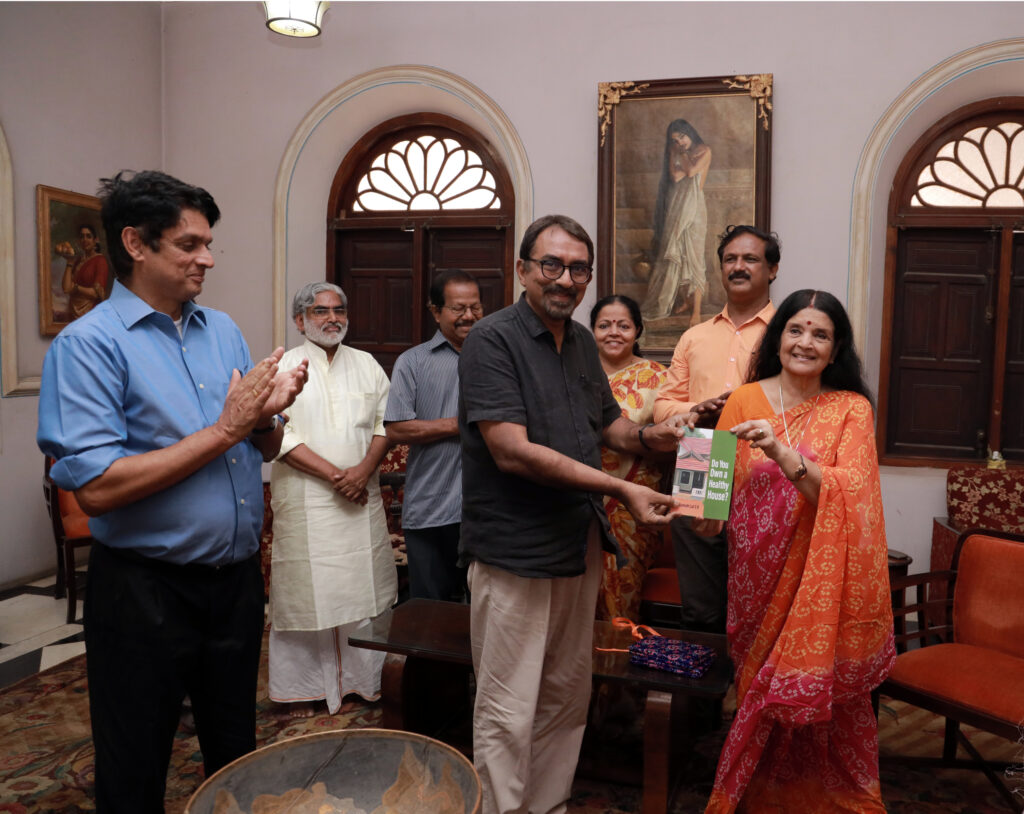
Nikunjam Krishna Kumar, A. Jaya Kumar, Sri. Madhu D, Dr. S. Ashaletha falicilated the occasion.
How to buy a copy of this Book?
- Amazon.in for Indian Buyers
- Amazon.com for International buyers
- Notionpress
- Flipkart
- Also, you can send a Whatsapp message on the number 9895077716 to order the book by VPP
- Send an email to order your book: mail@civiltalents.com
GALLERY
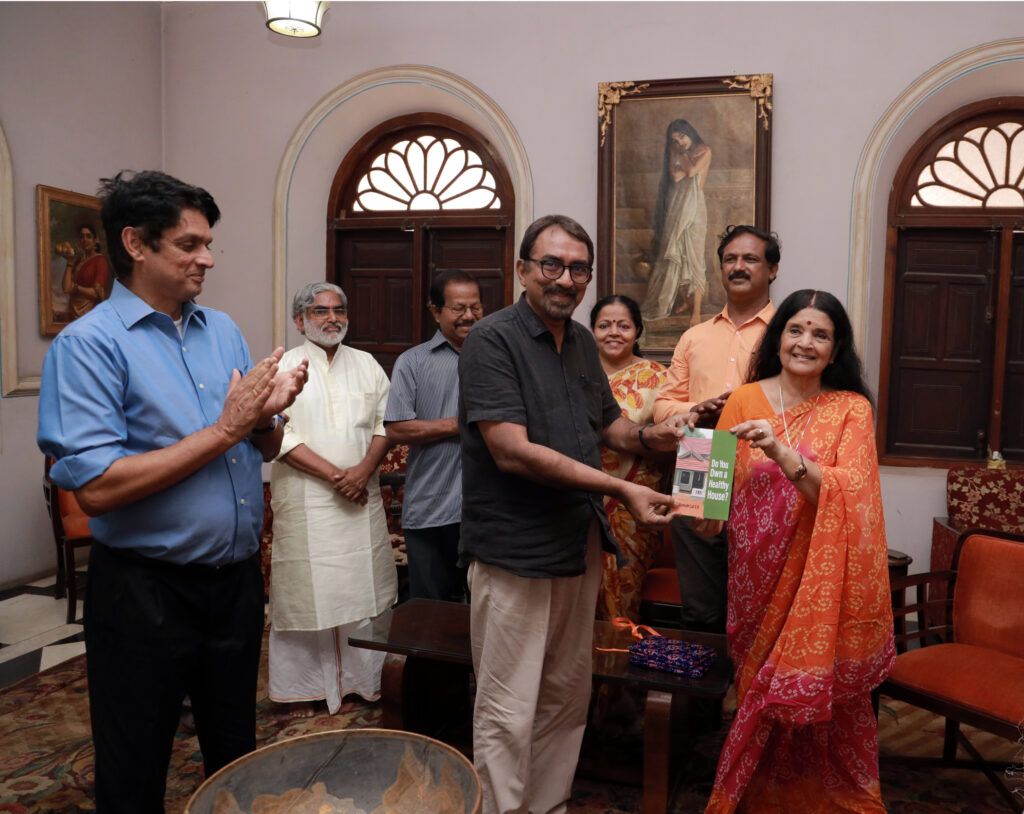
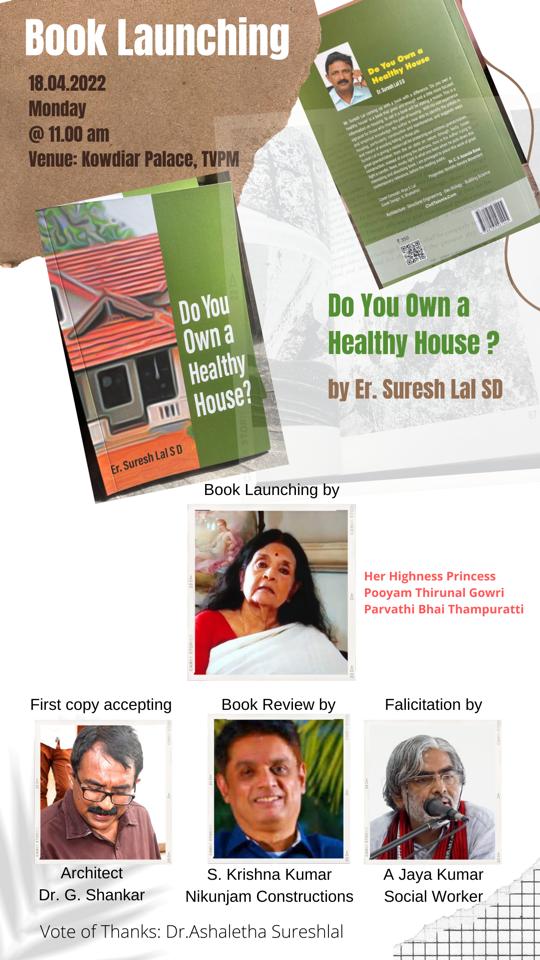
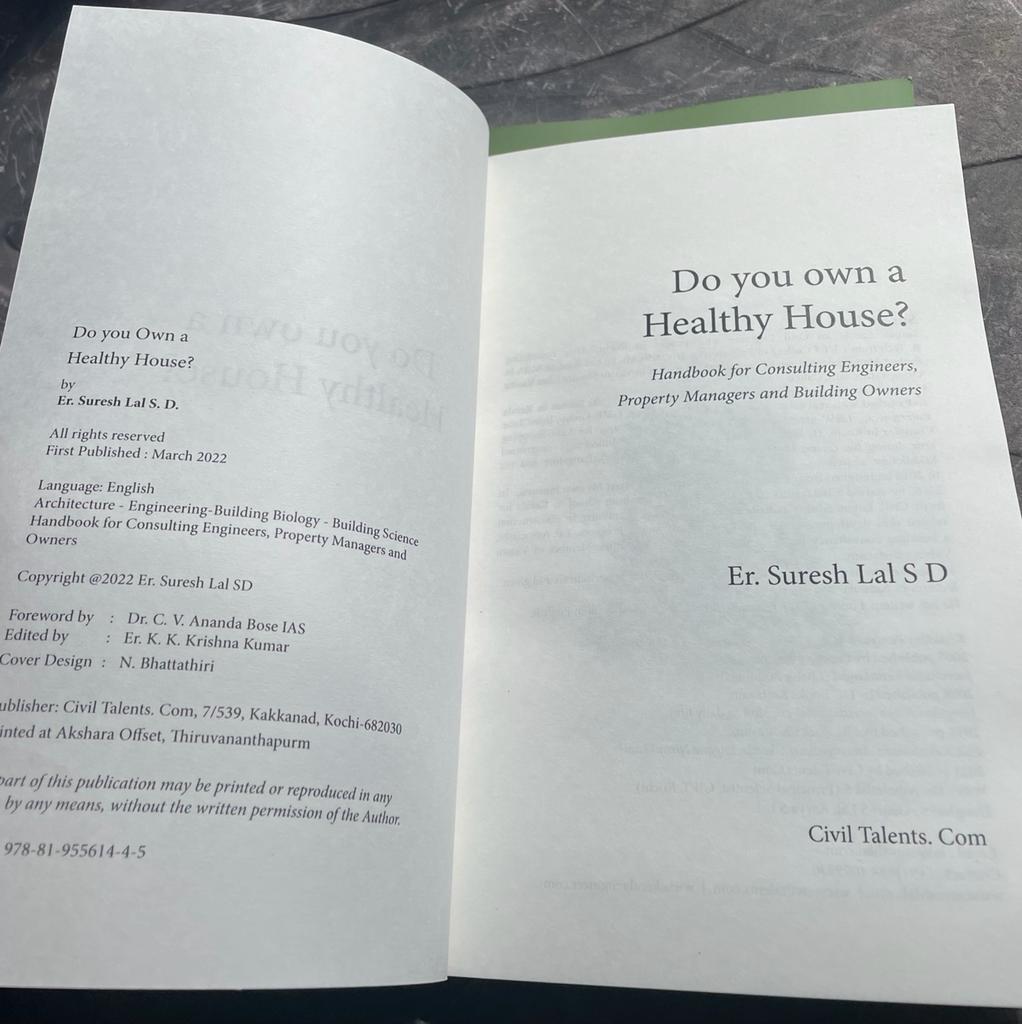
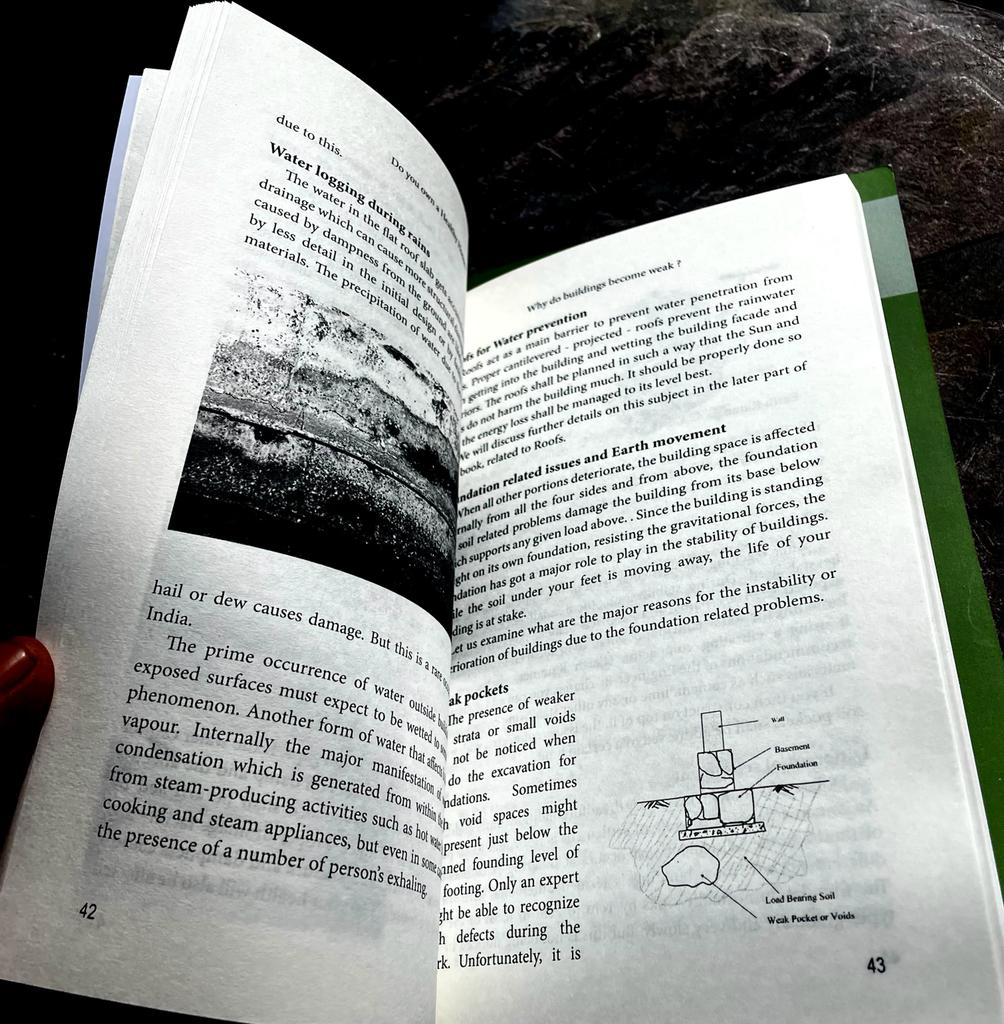
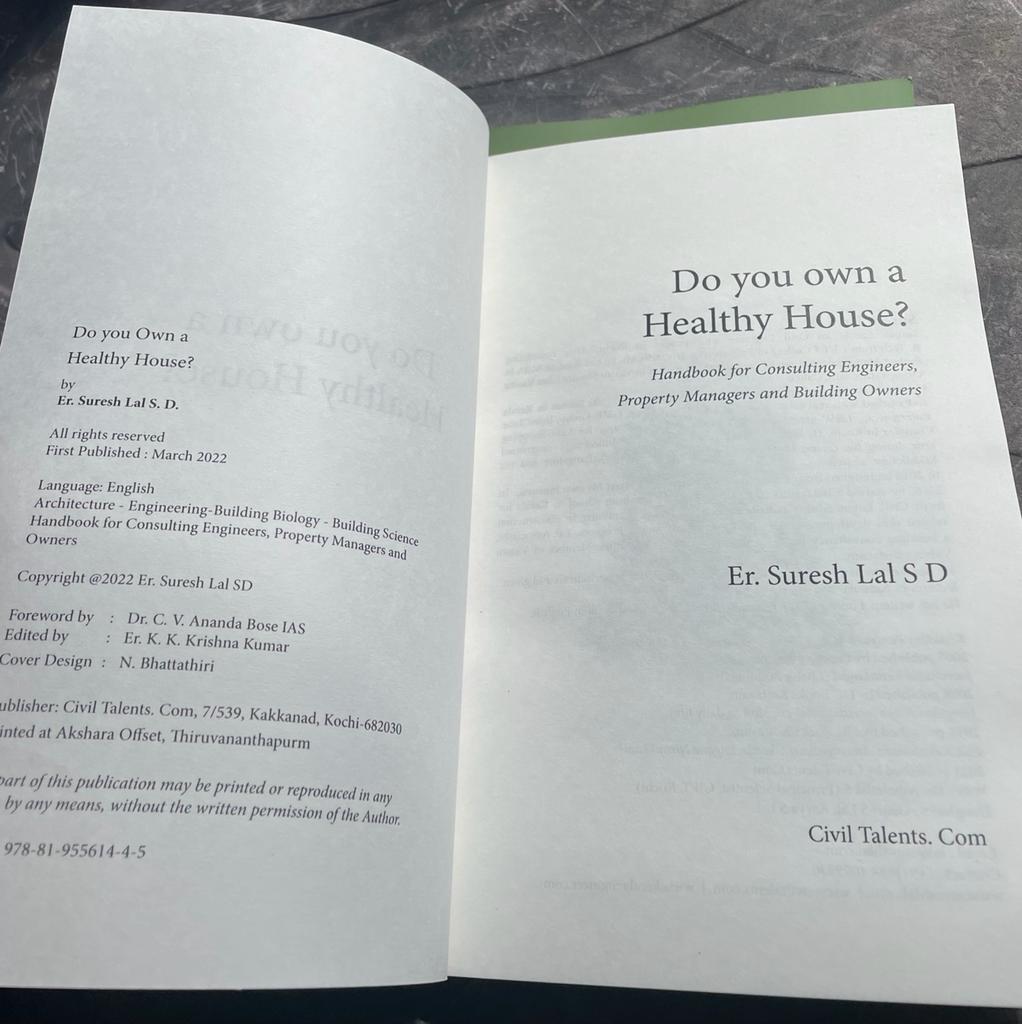

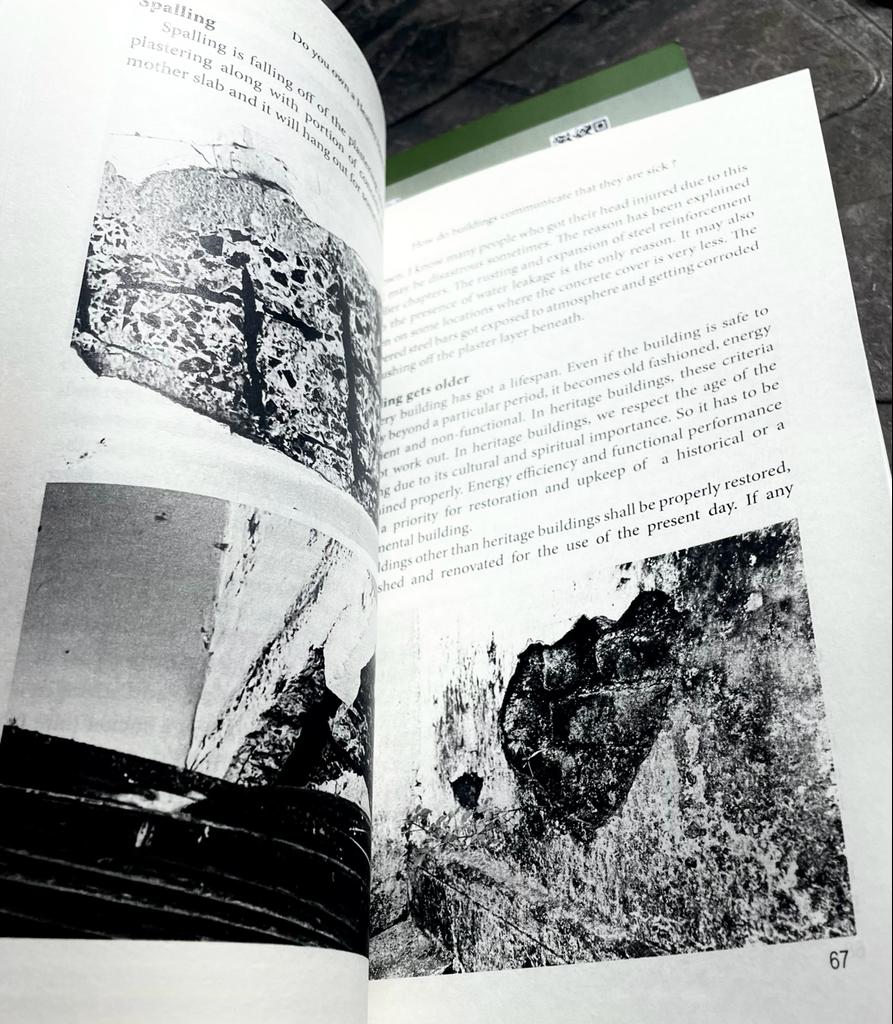
![റിയൽ എസ്റ്റേറ്റ് കേരളത്തിൽ [Realestate in Kerala]](https://sureshlal.com/wp-content/uploads/2020/05/book3b1_FI-265x100.jpg)






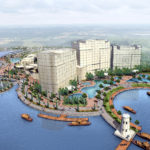
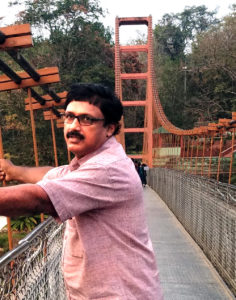
![റിയൽ എസ്റ്റേറ്റ് കേരളത്തിൽ [Realestate in Kerala] റിയൽ എസ്റ്റേറ്റ് കേരളത്തിൽ [Realestate in Kerala]](https://sureshlal.com/wp-content/uploads/2020/05/book3b1_FI-150x150.jpg)

Recent Comments